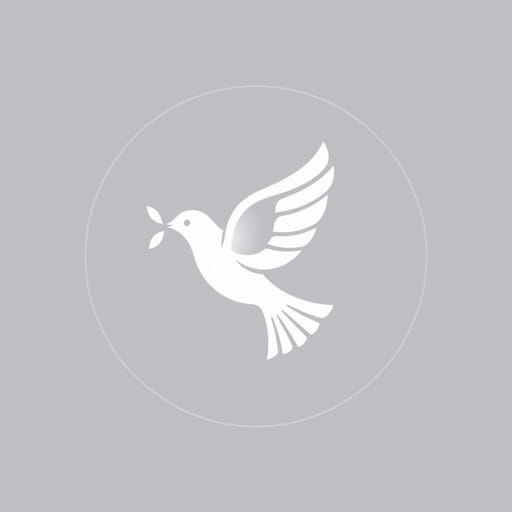Peacekeeping missions play a vital role in maintaining international peace and security, especially in regions affected by conflict, civil war, or political instability. These operations are typically led by international organizations such as the United Nations (UN) and involve sending personnel military, police, and civilian experts to conflict zones to help stabilize the situation, support the implementation of peace agreements, and assist in rebuilding. Over the years, many peacekeeping missions have left a lasting impact, bringing hope to communities struggling to survive in the aftermath of violence and political turmoil.
Understanding Peacekeeping Missions
Peacekeeping missions are usually established by a resolution of the United Nations Security Council. Their mandates can vary widely, ranging from monitoring ceasefires to protecting civilians, assisting with the disarmament of combatants, and supporting free and fair elections. Peacekeeping operations do not engage in combat unless they are authorized to use force in self-defense or to protect civilians under imminent threat.
Main Objectives of Peacekeeping Operations
- Monitoring and observing peace processes in post-conflict areas
- Assisting in the implementation of peace agreements
- Helping displaced populations return home
- Promoting human rights and the rule of law
- Rebuilding governance structures and institutions
Examples of Peacekeeping Missions
UNIFIL United Nations Interim Force in Lebanon
UNIFIL was established in 1978 to confirm Israeli withdrawal from Lebanon, restore peace and security, and assist the Lebanese government in regaining control over the area. Over time, the mission has evolved to respond to new threats and changing political dynamics. UNIFIL plays a key role in monitoring the cessation of hostilities and supporting the Lebanese Armed Forces in maintaining stability in the region.
MINUSMA United Nations Multidimensional Integrated Stabilization Mission in Mali
MINUSMA was established in 2013 after a political crisis and subsequent rebellion in Mali. The mission’s mandate includes supporting political processes, helping stabilize key population centers, and protecting human rights. MINUSMA is one of the most dangerous peacekeeping missions due to ongoing threats from terrorist groups and complex regional conflicts in the Sahel region.
UNMISS United Nations Mission in South Sudan
After South Sudan gained independence in 2011, UNMISS was launched to support peace and development in the new country. Following the outbreak of civil war in 2013, its role expanded to include the protection of civilians, monitoring human rights, and creating conditions for the delivery of humanitarian assistance. UNMISS also supports the implementation of peace agreements signed by conflicting parties in South Sudan.
MONUSCO United Nations Organization Stabilization Mission in the Democratic Republic of the Congo
MONUSCO is one of the largest and longest-running peacekeeping missions. It was originally established as MONUC in 1999 and later renamed MONUSCO in 2010 to reflect its expanded mandate to protect civilians and support the stabilization of the DRC. MONUSCO has been instrumental in disarming rebel groups, supporting the Congolese government, and promoting democracy and development in a country that has seen decades of conflict.
UNAMID African Union-United Nations Hybrid Operation in Darfur
UNAMID was a joint mission between the African Union and the United Nations in the Darfur region of Sudan. It began operations in 2007 to address a humanitarian crisis caused by conflict between Sudanese government forces, rebel groups, and militias. The mission focused on protecting civilians, facilitating humanitarian aid, and supporting peace processes. UNAMID officially ended its mandate in 2020, transitioning responsibilities to Sudanese authorities.
UNMIK United Nations Interim Administration Mission in Kosovo
Following the Kosovo War in the late 1990s, UNMIK was established in 1999 to administer the region and ensure a peaceful transition toward self-governance. The mission helped rebuild institutions, promote democratic governance, and provide basic services. Though its presence has scaled down over the years, UNMIK continues to play a diplomatic role and monitors the political situation in Kosovo.
UNTSO United Nations Truce Supervision Organization
Established in 1948, UNTSO was the first ever peacekeeping operation. It monitors ceasefires and agreements in the Middle East, particularly in areas like Syria, Lebanon, Israel, and Palestine. UNTSO military observers work closely with other missions to provide essential support and coordination. Though unarmed, their presence is crucial for maintaining trust and transparency among conflicting parties.
UNDOF United Nations Disengagement Observer Force
UNDOF was created in 1974 to monitor the ceasefire between Israel and Syria following the Yom Kippur War. It supervises the disengagement of forces and maintains peace in the Golan Heights. Although the mission has faced interruptions due to violence in Syria, it remains vital in preventing further escalation in the region.
Successes and Challenges of Peacekeeping
Peacekeeping missions have had mixed results, depending on the region, the nature of the conflict, and international cooperation. In many instances, peacekeepers have been successful in reducing violence, enabling political dialogue, and supporting post-conflict reconstruction. However, peacekeeping also faces significant challenges.
Common Challenges
- Lack of cooperation from host governments or conflicting parties
- Insufficient resources and funding
- Security threats, including terrorism and armed militias
- Delays in political processes and peace negotiations
- Cases of misconduct or abuse by peacekeeping personnel
Notable Achievements
- Support for democratic elections in several post-conflict states
- Successful disarmament and reintegration of former combatants
- Improved access to humanitarian aid and services
- Training and capacity building of local police and military forces
- Promotion of gender equality and protection of vulnerable groups
The Future of Peacekeeping Missions
As global conflicts evolve, so must peacekeeping strategies. Modern missions are becoming more multidimensional, incorporating human rights, development, and environmental concerns. There is also increasing emphasis on regional partnerships, technology integration, and involving local communities in the peace process. The future of peacekeeping will depend on sustained international commitment, innovation, and adaptability to complex conflict environments.
Examples of peacekeeping missions demonstrate how global cooperation can help restore stability, protect civilians, and foster long-term peace. While the challenges are significant, the efforts made by peacekeepers continue to bring hope to millions living in areas plagued by violence and unrest. Continued support, transparency, and engagement are crucial for ensuring the effectiveness of future missions across the world.
